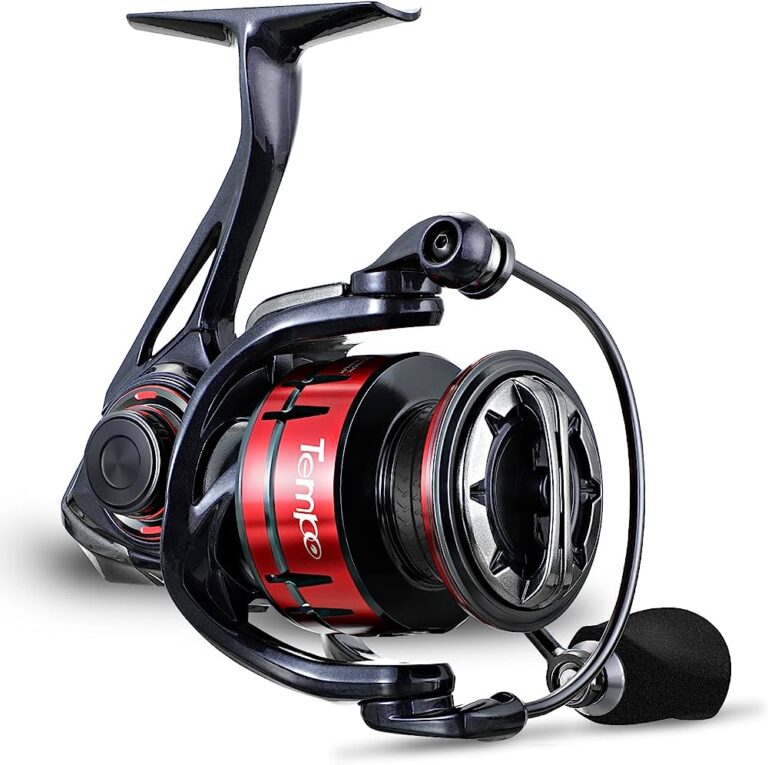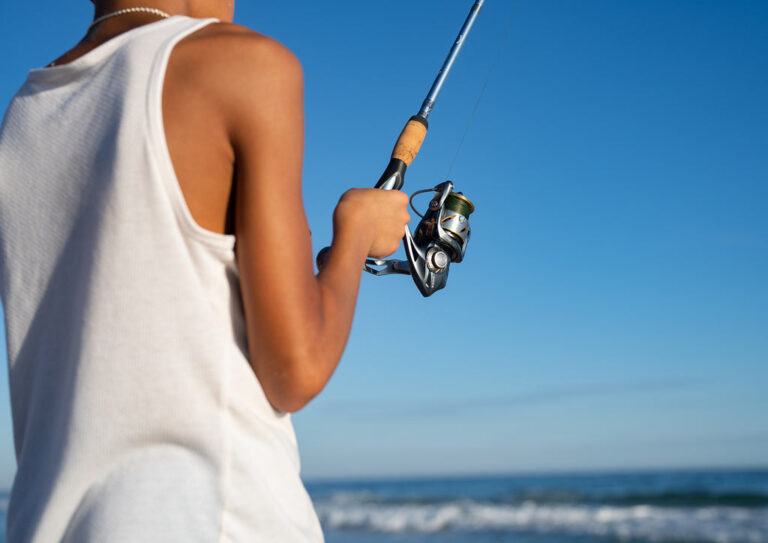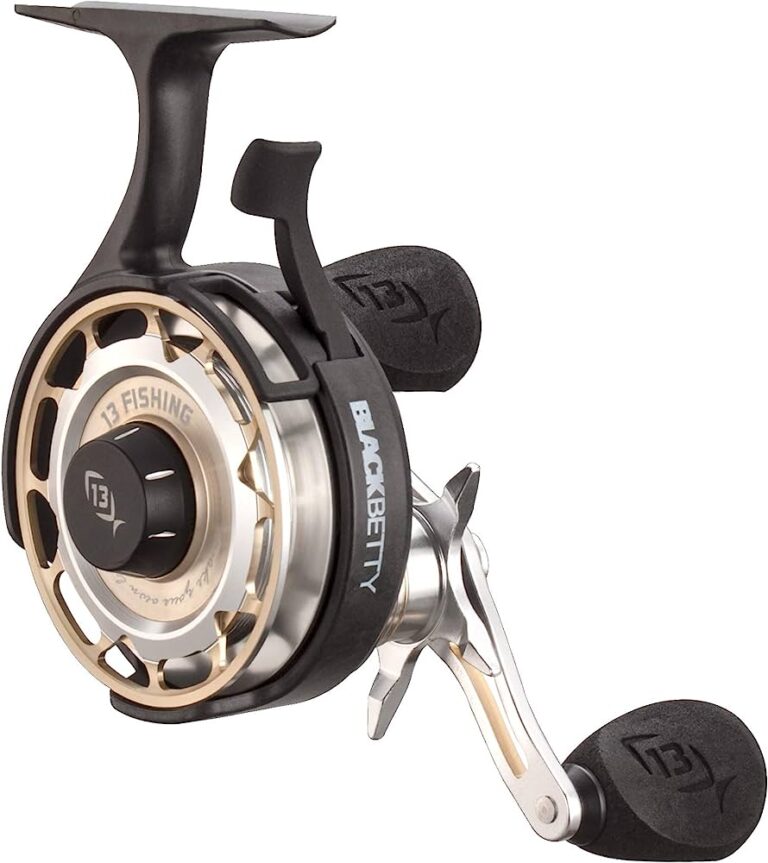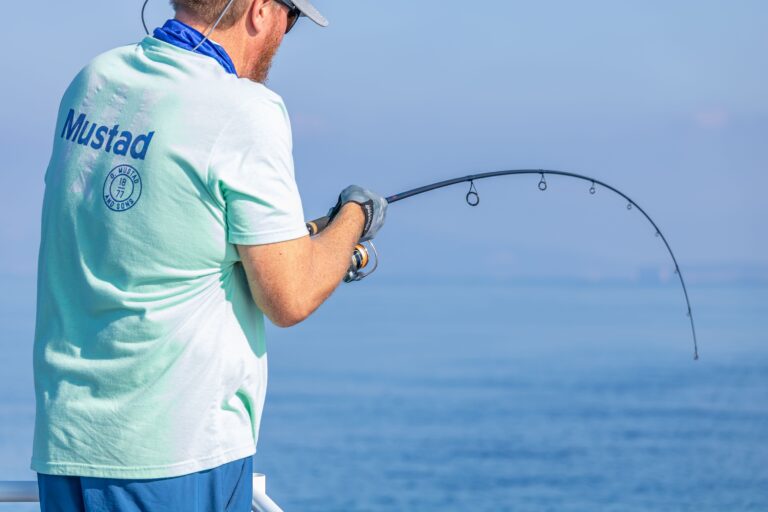Spinning reel drag systems provide resistance to a fish during the fight. These systems work by applying pressure to the spool to exhaust the fish.
Spinning reels are popular because of their versatility in freshwater and saltwater fishing, making them ideal for various fishing techniques. A spinning reel drag system is incredibly important to any angler, considering it allows for more substantial and challenging fish to be caught.
Every angler should be aware of how different drag systems work, so they can adjust it to catch the desired species. Not knowing enough about drag systems can result in losing the fish of a lifetime or breaking the fishing line. In this article, we will explain the primary spinning reel drag systems, how they work, and how to maintain them for optimal performance.

Credit: greatdaysoutdoors.com
Understanding The Basics Of Spinning Reel Drag Systems
Definition Of Spinning Reel Drag Systems
Anglers know that fishing is both an art and a science. And when it comes to fishing, mastering the drag system is essential. The spinning reel drag system controls how much resistance a fish feels when it takes your bait.
This technology helps prevent your line from snapping, ensuring that you can handle stronger fish, and it allows you to control the battles you have with them successfully.
Here are the essential points to know about spinning reel drag systems:
- The drag system puts pressure on the spool, controlling how much line can flow off of it.
- The drag setting can be adjusted to match the size of the fish and the type of line used.
- A good drag system helps secure the hook in the fish’s mouth and keeps your line intact during the fight.
The Importance Of Mastering It For Anglers
While most anglers know the importance of a good drag system, mastering it can take time and practice. Knowing the ins and outs of your reel’s drag system is crucial to ensure that you can tackle fish of various sizes and weights.
Properly setting your drag system can mean the difference between landing a big catch and being left empty-handed.
Here are some reasons why mastering the drag system for anglers is essential:
- A properly set drag system helps prevent line breaks from sudden fish action.
- It helps you fight the fish effectively, wearing it down before reeling it in.
- The right drag tension can keep line tension even, and avoid breakage when the fish makes sudden movements.
Types Of Fish That Require The Right Drag System
Knowing which fish species require different drag settings is crucial for angling success. Using a too-tight drag will break your line, and a too-loose drag means that the fight will be in the fish’s favor. Different species may need different drag settings.
Here are some examples of fish types that require different drag settings:
- Small fish, such as trout and bluegill, require lighter drag settings to ensure that they don’t break the line during the fight.
- Medium-sized fish, such as bass and walleye, require an intermediate-level drag to allow them to put up a good fight but avoid breaking the line.
- Large fish, such as salmon and muskies, need a heavy drag system because they are incredibly strong, and they require the anglers to wear them down before catching them.
Mastering a spinning reel drag system can take practice, but the rewards are significant. It helps you catch bigger fish and avoid losing them during the fight. Ensure you study the drag system manufacturer’s guidelines for your reel, and set it correctly based on the size of the fish and type of line you’re using, and enjoy a successful day out on the water.
Factors To Consider When Selecting A Spinning Reel Drag System
Understanding The Reel Specifications
When selecting a spinning reel drag system, it’s crucial to understand the reel specifications to ensure compatibility and optimal performance. Here are the key factors to consider:
- Gear ratio: The gear ratio determines how many times the spool rotates for each complete turn of the reel handle. Higher gear ratios result in faster retrieves, while lower gear ratios provide more power for fighting larger fish.
- Line capacity: The maximum amount and weight of line that the reel can hold are essential to match with the fishing conditions and targeted species.
- Ball bearings: More ball bearings result in a smoother and more fluid reel operation.
- Drag system type: There are two primary types of drag systems – front drag and rear drag. Front drag systems are more powerful and durable, while rear drag systems are easier to adjust and maintain.
Matching The Drag System To The Fishing Conditions
The fishing conditions, such as water depth, current, and the size and type of fish being targeted, play a vital role in selecting the spinning reel drag system. Here are some factors to consider:
- Saltwater vs. freshwater fishing: Saltwater fishing requires more robust and corrosion-resistant drag systems to withstand the harsh environment and powerful ocean species.
- Light vs. Heavy fishing: Light fishing requires a smooth and sensitive drag system to avoid breaking the thin lines, while heavy fishing requires more significant stopping power to handle the bigger fish.
- Casting vs. jigging: Casting involves long-distance throws and requires a drag system with excellent line management and casting control, while jigging requires a drag system with consistent and precise tension adjustments.
Finding The Right Drag Setting For The Targeted Fish Species
The drag system’s primary purpose is to prevent the fishing line from breaking when a fish is pulling it. It’s crucial to find the right drag setting for the targeted fish species to avoid losing the fish. Here are some tips:
- Start with a low drag setting and gradually increase it to find the maximum stopping power without breaking the line.
- Use a fishing scale to measure the drag force accurately.
- Consider the fish’s size, strength, and fighting style when adjusting the drag system.
- Always test the drag system before heading out to ensure optimal performance when it matters the most.
By following these guidelines, you’ll be able to select the perfect spinning reel drag system for your next fishing adventure. Happy fishing!
Properly Adjusting The Drag System
Spinning Reel Drag Systems Explained
A well-functioning spinning reel drag system is crucial for a successful fishing experience. Is essential in ensuring that the fish doesn’t escape while reeling it in. In this section, we’ll delve into the specifics of adjusting the drag system of a spinning reel for optimal results.
Understanding The Drag Knob And How It Works
The drag knob on a spinning reel is an adjustable mechanism that controls resistance and pressure on the spool. The basic principle is to tighten or loosen the drag system to allow the spool to turn smoothly while reeling in a fish without breaking the line.
Here are the key points to keep in mind about the drag knob:
- The drag knob is located on the top or front of the spinning reel.
- The knob controls the amount of tension on the spool.
- When the drag is tightened, more pressure is applied to the spool, and the line will become harder to pull.
- When the drag is loosened, less resistance is applied to the spool, and the line will be more relaxed.
The Right Way To Adjust The Drag For Different Fishing Conditions
Fishing conditions like water conditions, fish size, and type should be taken into account while adjusting the drag. Here’s what you need to keep in mind when adjusting the drag for various fishing conditions:
- For light fishing situations, the drag should be adjusted to be relatively less tight.
- For medium-sized fish in calm waters or moderate currents, the drag should be adjusted to be moderately tight.
- For large-sized fish in rough waters or strong currents, the drag should be adjusted to be significantly tight.
- Adjusting the drag too tightly can cause line breakage, and keeping it too loose will make it difficult to reel in a fish.
Understanding The Impact Of Line Capacity On Drag System Settings
The line capacity of the spinning reel plays a vital role in the drag system’s performance. Here are some key points to consider when adjusting the drag based on line capacity:
- The smaller the line capacity, the tighter the drag needs to be to prevent the line from breaking when a fish pulls hard.
- The larger the line capacity, the looser the drag should be to prevent the line from snapping when the fish makes sudden movements, increasing the risk of line breakage.
- When fishing with braided lines, the drag should be adjusted to be less tight because braided lines have better strength and sensitivity.
By adjusting the drag knob properly based on fishing conditions, line capacity, and fish size, you can prevent the line from breaking and increase your chances of reeling in a big catch.
Techniques For Fighting Fish With Spinning Reel Drag Systems
Spinning reels are commonly used for fishing, especially for catching small to medium-sized fish. The drag system of a spinning reel is a crucial part that helps to catch and fight fish effectively. Knowing how to use the drag system correctly can make a significant difference in successful fishing.
In this post, we will discuss the techniques for fighting fish with spinning reel drag systems, including playing the fish, maintaining tension on the fishing line and understanding when to apply more or less drag pressure.
Playing The Fish With A Spinning Reel
Playing a fish with a spinning reel is a crucial aspect of fishing. It requires a delicate balance of applying enough pressure to tire the fish but not too much that it breaks the line or hook. Here are some key points to consider:
- When you feel a fish bite, try to set the hook as soon as possible. This means pulling the rod in the opposite direction of the fish’s movement, which drives the hook into its mouth.
- Once hooked, reel in the line quickly to take up any slack and maintain tension on the line.
- When the fish starts to fight, let it run with the line if necessary. Do not try to stop it immediately, as this can cause the line to snap. Instead, tire the fish out by allowing it to take line and then gently reel it in.
- Take your time when playing the fish and avoid rushing or jerky movements. Try to keep the line tight and steady, allowing the drag to do its job.
Maintaining Tension On The Fishing Line
Maintaining tension on the fishing line is critical while playing a fish. This prevents the fish from getting away and keeps the line from going slack. Here are a few tips for maintaining tension on the fishing line:
- Keep the rod tip up and pointed at the fish at all times. This helps to maintain a tight line and prevents slack from forming.
- Use your non-reeling hand to guide the line onto the reel, helping to keep the line taut.
- Keep the line tight by reeling in at a steady pace, always keeping tension on the fish.
Understanding When To Apply More Or Less Drag Pressure
The amount of drag pressure applied during a fish fight determines whether you will tire out the fish or break the line. Here are some tips to help you understand when to apply more or less drag pressure:
- Start with a low drag setting and gradually increase it until you find the right balance. Too much drag can cause the line to break, while too little can result in a fish fight that takes too long to win.
- Increase the drag pressure when the fish makes a run, as this helps to tire it out faster.
- Decrease the drag pressure when the fish is close to the boat or shore to prevent the line from breaking or the hook from pulling out.
Mastering the techniques for fighting fish with spinning reel drag systems requires practice and patience. Knowing when to apply more or less drag pressure, maintaining tension on the fishing line, and playing the fish correctly can make a significant difference in successful fishing.
Follow these tips and keep trying until you find the perfect balance to catch your desired fish. Happy fishing!
Common Mistakes To Avoid When Using Spinning Reel Drag Systems
Spinning reel drag systems play a crucial role in fishing, and it’s essential to understand the common mistakes to avoid while using them. Here are some crucial points to keep in mind.
Over-Tightening The Drag System
When you tighten the drag system excessively, it results in an increased risk of the leader failing or the line breaking. Proper drag settings are crucial to prevent such mishaps. Here’s what you need to remember:
- Tighten drag enough to set the hook but loosen it soon to prevent line breakage.
- Don’t force the drag to the point where it won’t go further.
- Use less drag while casting to avoid a tangle and once you hook the fish, set the drag accordingly.
Ignoring Adjustments In Changing Fishing Conditions
Often, anglers ignore the changing conditions while using spinning reel drag systems, which results in missed opportunities. Adjusting the drag while fishing is crucial to handle changing situations. Here’s what you need to keep in mind:
- Be aware of the fishing conditions and adjust the drag accordingly.
- Increase drag while fishing in rough waters, fighting larger fish and prevent them from running.
- Decrease drag while fishing in calm waters and fighting smaller fish so that you have better control.
Failing To Maintain The Drag System
Maintaining the drag system is crucial for smooth functioning and durability. You should check the drag system regularly to ensure its optimum performance. Here’s what you need to keep in mind:
- Clean and lubricate the drag system regularly.
- Don’t drop the reel or damage it while transporting.
- Inspect the drag system’s mechanical parts after every use and replace parts if needed.
Avoiding these three common mistakes while using spinning reel drag systems will not only make your fishing experience better but also increase your chances of a fruitful catch.
Understanding The Different Types Of Drag Systems
Spinning Reel Drag Systems Explained
In the world of fishing, the drag system is one of the most important components of a spinning reel. It helps to maintain a balanced tension for reeling in a fish while preventing the line from breaking. Can greatly enhance your fishing experience, so let’s take a closer look.
Front Drag Vs. Rear Drag
When it comes to fishing with a spinning reel, there are two primary types of drag systems: front drag and rear drag. Here are some key points to help you understand the difference between the two:
Front Drag
- Positioned on the front of the spinning reel
- Provides better accuracy and control over the drag
- Allows for precise adjustments even when fighting a fish
- More durable and can withstand heavier lines and fish
Rear Drag
- Positioned on the rear of the spinning reel
- Offers simple and easy adjustments for lighter fishing
- Ideal for beginners or casual fishing
- Less durable than front drag, suitable for smaller fish
Other Specialized Types Of Drag Systems
In addition to front and rear drag systems, there are several other specialized types of drag systems used in spinning reels. Here are some key points about each:
Carbon Fiber Drag
- Made of carbon fiber composite material
- Lightweight yet strong and durable
- Ideal for saltwater fishing as it resists corrosion and does not absorb water
Magnetic Drag
- Uses a series of magnets to control the spool’s speed
- Reduces the likelihood of backlash or birds’ nests
- Offers precise adjustments for different fishing conditions
Centrifugal Drag
- Uses centrifugal force to slow down the spinning spool
- Offers great control for heavy lures or baits
- Ideal for accurately casting in windy conditions
While each of these drag systems has its benefits, selecting the right one largely depends on the type of fishing you plan to do. Understanding the different types of drag systems and their capabilities can greatly improve your chances of catching that big fish.
Matching The Type Of Drag System To Your Fishing Needs
Understanding How Different Types Of Fishing Conditions Require Different Types Of Drag Systems
When it comes to choosing the right drag system for your spinning reel, it’s important to consider the type of fishing conditions you’ll be encountering. Here are some key points to keep in mind:
- Drag power: The amount of resistance your reel can generate is determined by its drag power, which determines how easily you can tire out the fish. So, for instance, if you’re fishing in strong currents or deep waters where the fish tend to dive, you’ll need a strong drag system to keep them under control.
- Smoothness: The drag system should operate smoothly, without any sudden jerks or slips. This ensures that you can reel in the fish gradually, without putting unnecessary strain on the fish or your reel.
- Ease of adjustment: The drag system should be easy to adjust, so that you can quickly modify the resistance level as per your fishing conditions. This is particularly important when you’re dealing with different fish species or sizes.
Selecting Reels With Specific Drag Systems Based On The Fish Species You Intend To Catch
Different fish species have different fighting capabilities, so it’s important to choose a reel with the right drag system. Here are some key points to keep in mind:
- Braid or mono: The type of line you use can affect the performance of your drag system. Braided lines have less stretch and require a more sensitive reel with a finer tuning range. On the other hand, monofilament or fluorocarbon has more stretch and will require a stronger drag system.
- Size: The size of the fish also impacts the choice of drag system. Larger fish require a higher resistance, whereas smaller fish require a more sensitive drag system to avoid tearing the hook from their mouths.
- Fish behavior: Similar-sized fish from different species may behave differently and require different types of drag. Some fish may swim at a steady pace while others may make sudden runs, requiring a fast-acting and smooth drag system.
Considering The Durability And Lifespan Of The Drag Systems
The durability of the drag system affects the lifespan of the reel, and impacts the time and money required for maintenance and repair. Here are some key points to keep in mind:
- Material quality: Look for drag systems made of high-quality materials such as carbon fiber or ceramic, which can withstand heavy abuse and do not wear out quickly.
- Heat dissipation: The heat generated by the drag system can cause the line to wear out faster. Some reels come with heat-dissipating features to prevent this.
- Maintenance: The drag system requires regular cleaning and maintenance to ensure it functions optimally. Consider a reel with easy disassembly for cleaning and lubrication.
Recap Of Mastering Spinning Reel Drag Systems
Spinning Reel Drag Systems Explained
When it comes to fishing, spinning reel drag systems play a crucial role in the success of your catch. It’s essential to master these drag systems, so you have greater control over your fishing line’s tension and ensure you don’t lose your prized fish.
In this section, we’ll recap on some important points to remember when mastering spinning reel drag systems.
Importance Of Mastering The Drag System
A common mistake that many anglers make is not mastering their drag system adequately. Mastering your drag system is crucial because it helps:
- Prevent the breaking of your fishing line
- Tire the fish out so you can catch it more comfortably
- Keep the line taut so that the fish does not escape
To achieve these goals, it’s vital to choose the right spinning reel drag system and use it correctly.
Tips And Techniques For Properly Using Spinning Reel Drag Systems
To properly use the spinning reel drag system, follow these tips:
- Start by setting the drag pressure to about 25% of the line’s breaking strength. For example, if your line has a breaking strength of 10 pounds, set the drag pressure to 2.5 pounds.
- Adjust the drag when you feel the fish fighting by turning the drag adjustment knob either up or down, depending on the fish’s strength and the direction of its pull. If it’s a large fish, it’s best to tire it out by using your reel to reel in the slack line and then lowering your rod tip to apply more pressure to the fish.
- Do not adjust your drag when the fish is pulling. Doing so will only cause your line to snap because of the sudden change in tension.
Advice For Choosing The Right Spinning Reel Drag System For Your Fishing Needs
Choosing the right spinning reel drag system is essential for different fishing conditions. Here are tips to consider:
- For light to medium fishing conditions where the fish is less than 20 pounds, choose a front drag system.
- For heavier fish weighing 20 pounds or more, consider using a rear drag system.
- For maximum control, choose a spinning reel with an over-sized drag system or a sealed drag system for salt-water fishing.
Choosing the right spinning reel drag system is crucial because it ensures your success in catching your prize fish. With a good drag system, you can control your line’s tension and tire out the fish, making it easier to catch.
Remember, mastering your drag system takes time, so practice using different fishing techniques with your spinning reel to become the best at fishing.
Conclusion
To sum it up, choosing the right spinning reel drag system is essential for any angler to get the most out of their fishing experience. Understanding the different types of drag systems, such as front and rear, and their respective pros and cons, will help you make a wise decision.
Therefore, before you invest in a reel, consider the size of the fish you’re targeting and the fishing conditions you’re likely to encounter. Finally, remember to regularly maintain your drag system to ensure optimal performance. We hope this article has helped you gain a better understanding of spinning reel drag systems, enabling you to choose the perfect drag system for your fishing needs.
Happy fishing!





